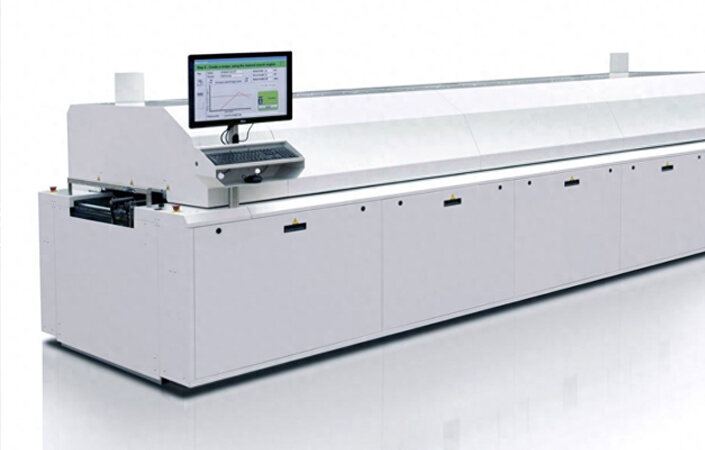Introduction to the Reflow Soldering Process for Crystal Oscillators
The 3225 crystal oscillator (3.2mm × 2.5mm package), as a miniaturized surface-mount crystal oscillator, is widely used in 5G communications, the Internet of Things (IoT), consumer electronics, and other fields. Its reflow soldering process is a critical step to ensure reliable connection between the oscillator and the PCB, requiring precise temperature control and process management to achieve high-quality soldering. Below are the key points and process analysis of the reflow soldering process:

Reflow Soldering Process Flow: The reflow soldering process is mainly divided into four stages: preheating, heating, reflow, and cooling.
Preheating Stage: The PCB board is heated to 120-180°C to remove solvents and moisture from the solder paste, avoiding the generation of bubbles or splattering during soldering.
Heating Stage: The temperature is rapidly increased to 220-240°C to melt the solder paste and wet the pins of the crystal oscillator and the pads, forming a metallurgical bond through intermetallic compounds (IMC).
Reflow Stage: The peak temperature is maintained for about 10-30 seconds to ensure the solder fully flows and covers the pads, avoiding cold solder joints or insufficient soldering.
Cooling Stage: The solder joints are solidified through gradient cooling (typically 2-5°C per second) to reduce thermal stress damage to the crystal oscillator.
Key Process Parameters and Control:
Temperature Profile Optimization: The temperature curve should be adjusted according to the thermal sensitivity of the 3225 crystal oscillator. The preheating rate should be controlled at 1-3°C per second, and the peak temperature should not exceed the thermal limit of the oscillator (typically 250°C).
Nitrogen Protection: An inert gas environment (such as nitrogen) is used to reduce oxidation, improving the gloss and reliability of the solder joints.
Solder Paste Selection: It is recommended to use low-melting-point lead-free solder paste (e.g., Sn96.5Ag3.0Cu0.5) to balance soldering strength and thermal shock risk.
Mounting Accuracy: Ensure the surface-mount crystal oscillator is aligned with the pads, with an offset of less than 0.1mm to prevent bridging or misalignment defects.
Process Challenges and Solutions:
Thermal Stress Control: Due to the small size and fragile structure of the 3225 crystal oscillator, rapid heating or cooling should be avoided. Segmented heating and slow cooling designs can be used to reduce thermal stress.
Solder Paste Printing Accuracy: The stencil openings should match the 3225 pads (recommended thickness: 0.1-0.15mm) to avoid excessive solder paste causing short circuits.
Inspection and Correction: Use X-ray or AOI (Automated Optical Inspection) to check the quality of solder joints. Defects can be repaired through local rework or secondary reflow.
Process Advantages and Applicability:
High-Precision Soldering: Suitable for miniaturized surface-mount components, with a soldering yield of over 99.9%.
Cost Efficiency: Compared to wave soldering, it reduces solder dross waste and supports double-sided mounting processes.
Automation Compatibility: Can be integrated with SMT production lines to improve mass production efficiency.
The reflow soldering process for 3225 crystal oscillators is a key technology in electronic manufacturing, with its core lying in the precise control of the temperature profile and the optimization of process parameters. By selecting appropriate solder paste, optimizing the nitrogen environment, and enhancing inspection methods, soldering quality and product reliability can be significantly improved, meeting the demands of high-density electronic devices. In the future, with the development of 6G communications and AIoT technologies, this process will further evolve towards low-temperature and intelligent directions.



